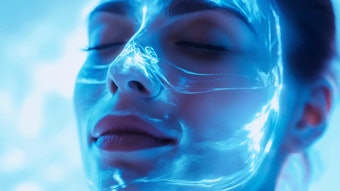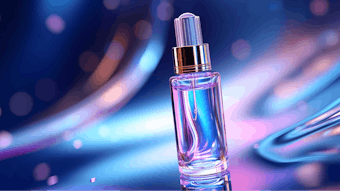Film-forming agents are an important part of personal care products. They provide a durable, flexible and continuous covering to keratinous substrates such as skin, hair or nails in addition to aesthetic benefits. While these films must be durable, they must also be thin enough to maintain a natural appearance and feel. For specified benefits, it is important that film-formers provide a continuous layer, which can be challenging when thin films crack or chip.
In relation, Daeyeon Lee, PhD, and Jacob Prosser, along with fellow researchers from the University of Pennsylvania, were investigating the manipulation of nanoparticle films through spin-coating conditions when they discovered a method to prevent cracks in films for solar cell coatings, and possibly for cosmetics.
Nano Spin Coating
Nanoparticle films are necessary for a number of industries, yet they often crack when dried. Currently there are no valuable solutions for this problem, therefore Lee’s team utilized spin coating to manipulate and control the thickness of nanoparticle films, adjusting conditions such as the rotational rate and suspension properties. The films were created by suspending silica or titania nanoparticles in water, spreading these mixtures over a surface, and rapidly spinning them as the water evaporated. This created an even coating of the nanoparticle material. Spin coating had been previously used to generate nanoparticle and polymer films, but cracks often appeared during deposition.
“We began by determining if the existing polymer model could be directly and immediately applied. [The spin- coated silica nanoparticles] displayed a distinct feature that allowed us to group them into two separate types. This feature was cracks. There were spin-coated films that contained fully interconnected crack networks, and films that did not; the apparent difference being correlated to a certain thickness threshold,” explained Lee. The team compared these findings to the polymer model and found similarities in the spin-coating conditions in addition to some unexplainable differences.
Before examining the thickness threshold, the team’s research veered toward the use of spin coating to fabricate Bragg reflectors (used in solar cells), which brightly reflect certain colors of light. The team wanted to stack nine layers to achieve high light reflection, but cracks began to form as they reached six layers.
“Seeing that we were able to stack multiple layers one after the other with spin coating was something quite interesting to us, and different from what others had observed with some polymer based films. Also, seeing that we could make a composite film having a thickness greater than the lowest critical cracking thickness of the two [nanoparticle films] in the composite suggested that multicoating may play a role in preventing crack formation,” added Lee. This inspired the team to apply a multi-coating approach to the silica and titania nanoparticle films.
A Layered Approach
Before creating multiple layers of the nanoparticle films, the team first evaluated whether they would disintegrate when re-exposed to the solvent (water). After re-submerging, drying and measuring the films up to 2 1/2 months later, the team found neither the silica nor the titania nanoparticle film was disintegrated, which meant layering was possible. Upon multicoating the silica and titania films, the team was elated to see a thick film result.
The next step was to address cracking. To determine if the multicoating method could be used to avoid cracking during deposition, the researchers successfully built a film having a thickness greater than a single spin-coated layer before it cracked. The team increased the film thickness to determine if there was a threshold at which the film would crack, and there was. Multicoated films were then made with different coating thicknesses, and the final film thickness producing cracks was observed. The thickness of the individual layers altered when the final film would crack in an inverse manner.
“Thinner coating thicknesses gave larger final film thicknesses before cracking would occur,” said Lee. The team then made a multicoated film that was thicker than what a single coated film cracks at, and deposited a single coated film of equal thickness on top. “If the film would crack and crack similar to a single coated film having a total thickness the same as both films taken together, this would indicate that the applied stresses in multicoated films might be different during fabrication, as compared to single coated films,” explained Lee. Conversely, no crack would mean that the strength of multicoated films was greater than for the single coated films. Interestingly, the multicoated film layers on the bottom did not crack, whereas cracks in the film propagated down through the top single coated layer, showing the film had grown stronger during the multicoating process somehow. The researchers hypothesized that the bonds preventing the nanoparticle films from cracking were oxygen bridges.
“We believe that these bonds are forming and giving increased strength or adhesion to the particle network in the nanoparticle films, which is enough to prevent the particles from being torn apart by the stresses imposed during drying of the film that cause cracks,” explained Lee. The team believes multicoating can be used to avoid cracks in other metal oxide nanoparticle films, i.e., alumina, zirconia and ceria, due to their similarity in structure. The team is also investigating whether this multicoating method can be used with other film deposition techniques to prevent crack formation in various colloidal films.
Personal Care Potential
Since this research was conducted for industrial applications, its use in personal care is speculative at this point. However, Lee finds the technology could possibly be used in two regards—for the creation of new, iridescent structural colors, and to prevent cracking in cosmetic films.
“We were able to generate structural color films successfully without any heat treatments, which typically are required,” noted Lee. Such structural colors could provide iridescence to color cosmetics. In addition, Lee suspects the films could be useful for cosmetic applications where cracking is an issue, such as in nail color, potentially to prevent it.










